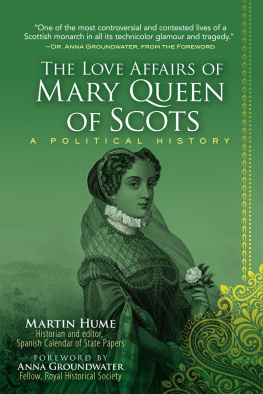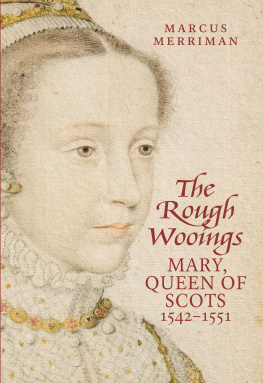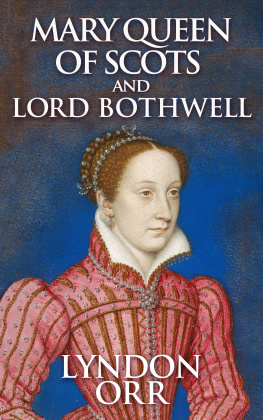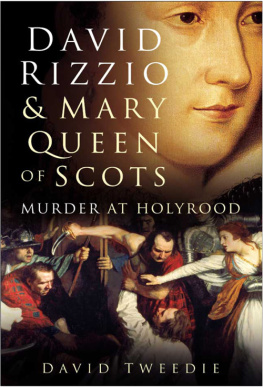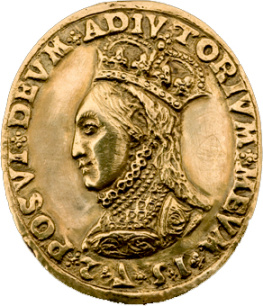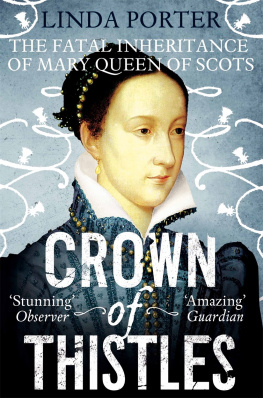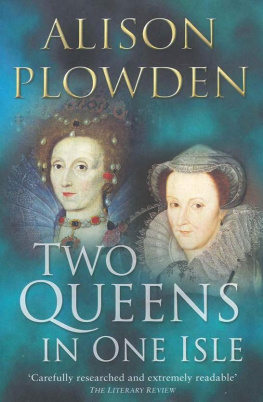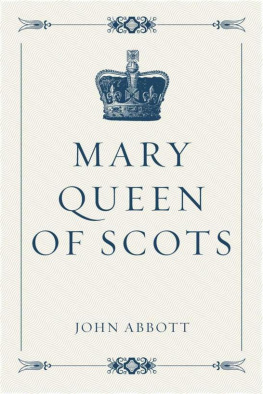


MARY STUART WHEN SIXTEEN
Painter unknown. Owner, the Duke of Devonshire.
Photo, Hanfstaengl.

First published in 1903 by McClure, Phillips and Company.
First Racehorse Publishing edition 2020.
All rights reserved. No part of this book may be reproduced in any manner without the express written consent of the publisher, except in the case of brief excerpts in critical reviews or articles. All inquiries should be addressed to Racehorse Publishing, 307 West 36th Street, 11th Floor, New York, NY 10018.
Racehorse Publishing books may be purchased in bulk at special discounts for sales promotion, corporate gifts, fund-raising, or educational purposes. Special editions can also be created to specifications. For details, contact the Special Sales Department, Skyhorse Publishing, 307 West 36th Street, 11th Floor, New York, NY 10018 or .
Racehorse Publishing is a pending trademark of Skyhorse Publishing, Inc., a Delaware corporation.
Visit our website at www.skyhorsepublishing.com.
10 9 8 7 6 5 4 3 2 1
Library of Congress Cataloging-in-Publication Data is available on file.
Cover artwork credit: Getty Images
Print ISBN: 978-1-63158-370-4
eISBN: 978-1-63158-371-1
Printed in the United States of America
CONTENTS

FOREWORD
BY DR. ANNA GROUNDWATER

ONLY PERSONAL AND PASSING INFATUATION FOR [BOTHWELL] could have blinded so able and ambitious a stateswoman as Mary to the fatal sacrifice she was making in taking him to her arms ()
So writes Martin Sharp Hume of Marys fatal decision in 1567 to marry the forceful earl of Bothwell, a man complicit in the murder of her late husband Darnley. In this, we can see two of Humes main themes in his enthralling life of Mary, Queen of Scots: her personal attractions, her impressive courage, and her acute political ability set against the greatest flaw that undermined these assets, her proclivity to surrender all sound judgement to sensual passion.
In these pages, Mary is revealed in all her monarchical splendour and human frailty, as Hume paints a rich portrait of a rounded, complex, and compelling personality, whose justifiable ambitions were repeatedly blown apart by falling in love with unsuitable men.
It was almost as if a malison accompanied the matrimonial regards of Mary Stuart. One after the other, her husbands and suitors had died prematurely and unhappily; Francis in early youth, Darnley cruelly murdered, Bothwell a prisoner in exile, Norfolk on the scaffold, and Don John of a broken heart; all dead but Mary... ()
Mary, he writes, was also unlucky, her political fortunes inextricably intertwined with those of her English counterpart, the wily Elizabeth I, a woman with whom she is inevitably compared:
Mary in most respects possessed a much finer and nobler nature than Elizabeth; she was a woman of higher courage, of greater conviction, more generous, magnanimous, and confiding, and, apart from her incomparably greater beauty and fascination, possessed mental endowments fully equal if not superior to those of the English queen. But whilst the caution and love of mastery of the latter always saved her from her weakness, Mary Stuart possessed no such safeguards, and was periodically swept away, helplessly and irremediably, by the irresistible rush of her purely sexual passion. ()
And when it came to the last dangerous diplomatic dance between these two talented queens, Elizabeth, as she almost always did, came off best, Mary kneeling before her executioner at Fotheringhay as the ink dried on Elizabeths signature of her death warrant.
Hume set out in the early 1900s to write a history of Marys life that focuses on the political effects of Marys three doomed marriages, and a multitude of marriage negotiations. He recounts how Marys first suitor, at the tender age of a few months, was Henry VIII of the auld enemy England on behalf of his infant son, the future Edward VI. Scottish resistance to that proposal triggered the violent Anglo-Scottish wars known as the Rough Wooing, and a series of English invasions only ultimately defeated with French assistance. The auld alliance with France, the country of Marys mother Marie de Guise, was then further cemented by her daughter Marys upbringing at the French court, and the proposal of a match with the future French king, Francois II. A glittering future for Mary seemed assured, and duly she became queen of France as well as that of Scotland in 1559. But then the bad luck, that Hume shows dogging Mary throughout her life, brought a swift end to that reign as Francois succumbed to illness in 1560. Mary Queen of Scots was back on the marriage market.
At first it was the Catholic crowned heads of Europe that sought to make their diplomatic best of Marys widowhood, and the opportunity this gave them to recalibrate the power balance in the confusion of the post-Reformation. But proposals foundered in the face of her ex-mother-in-law Catherine de Medicis refusal to countenance strengthening Marys position. With no marriage imminent, Mary returned somewhat slowly to her homeland Scotland, and her neglected royal duties there.
At this point Hume shows how her overriding ambition became abundantly clear, and that was the greatest royal prize she hoped to secure, that of the crown of England. Marys claims to the English succession were through her grandmother Margaret Tudor, Henry VIIIs sister. She was, as Home writes, ready to plot and plan for carrying out, at any cost of life and suffering, the dream that animated her from her girlhood to her death. () However Elizabeth was equal to this challenge. Whichever marriage scenario Mary considered next was to be shaped by her English ambition, and Elizabeths attempts to frustrate it since such an acknowledgement would endanger Elizabeths own throne. From then on, Elizabeth and her counsellor Cecil schemed to control Marys marital futureand their ploy was to offer her Elizabeths own favourite, Robert Dudley, earl of Leicester.
Stung by this insult, Mary began to look elsewhere, her eye falling on her cousin, the good-looking Henry, Lord Darnley. On paper he was a good choice, but Marys infatuation with him blinded her to his obvious deficiencies (this tippling young booby of a consort [) combined with her courtly flirtations appeared jarring for some in newly Protestant Scotland and left her open to censure. The fall-out of the disastrous Darnley marriage, and a whirlwind of accusation after his murder left Mary tainted and vulnerable, desperately in need of the good judgement she had exercised in the earlier years of her reign.
Unfortunately for her, the rough and hirsute, shaggy and stern, the strong man (off to a good Catholic, and to secure a Catholic queen on the Protestant Elizabeths throne, Mary was dead.
Next page
